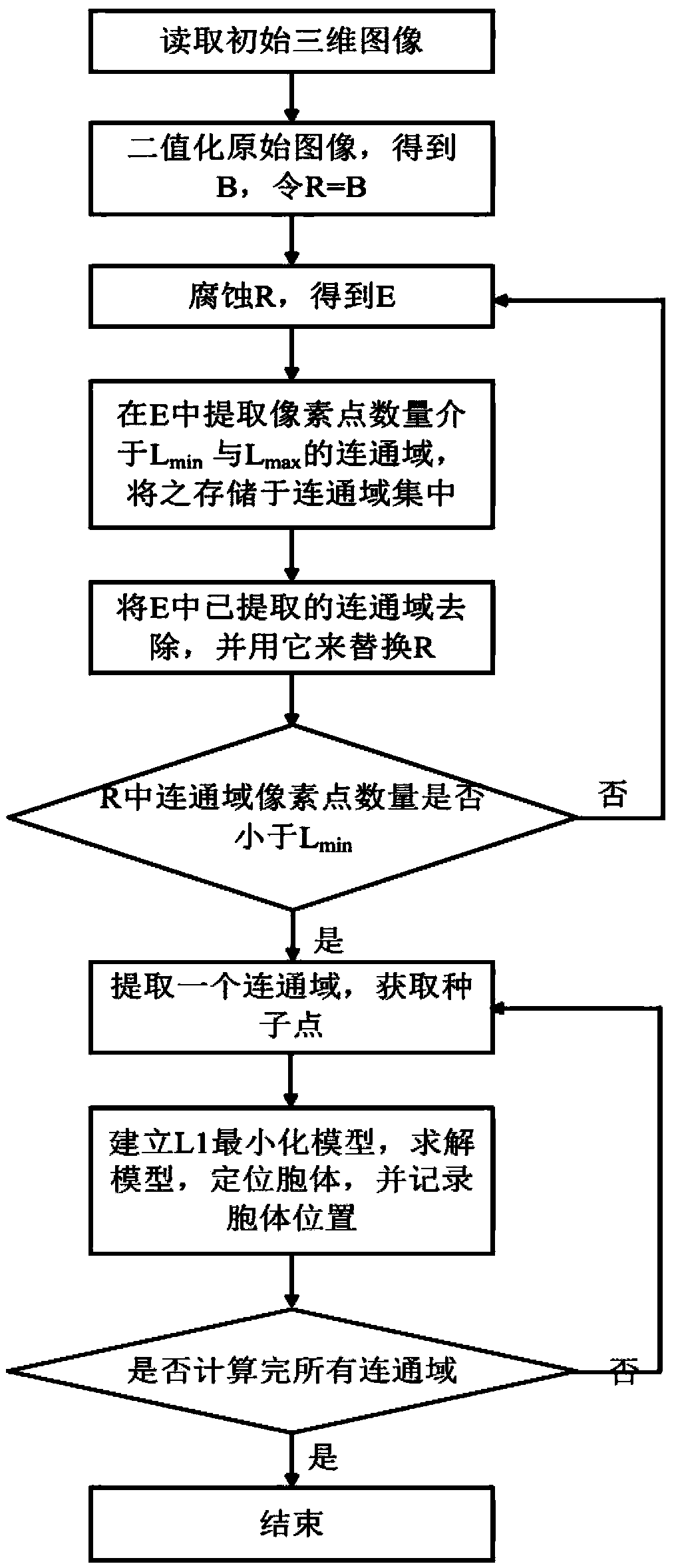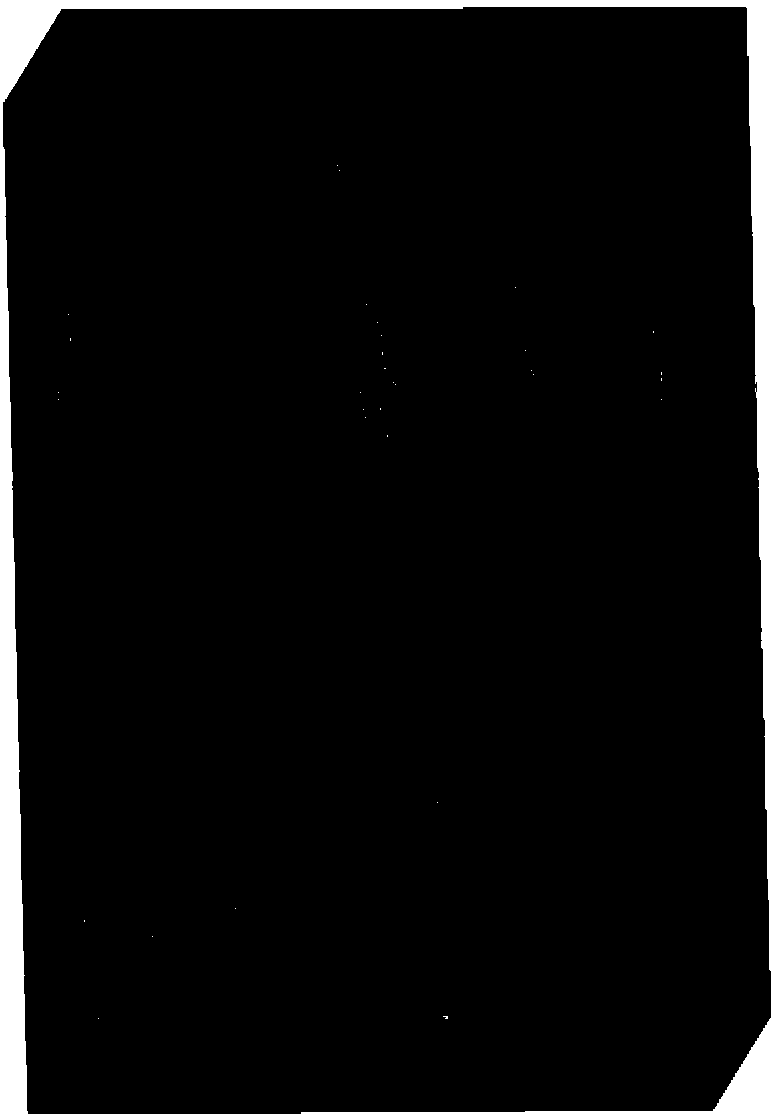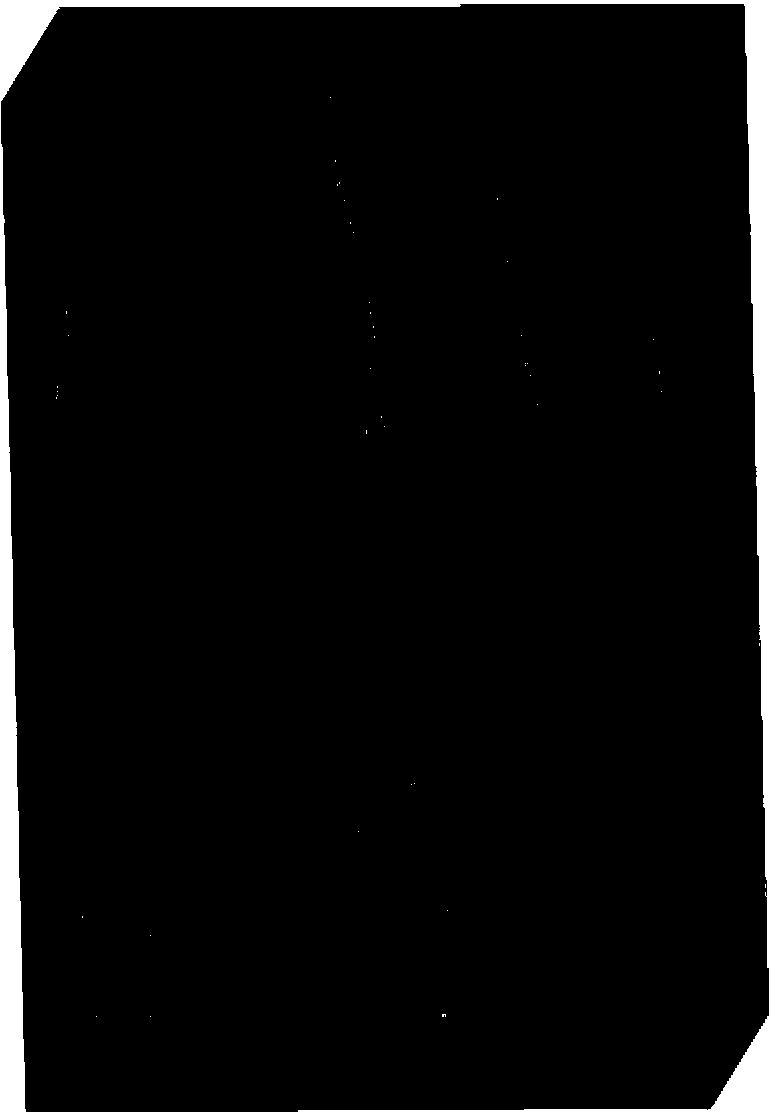Automatic cell localization method based on minimized model L1
A cell positioning and minimization technology, applied in the field of biomedical optical image processing, can solve problems such as immaturity and neuron cells that cannot be processed well
- Summary
- Abstract
- Description
- Claims
- Application Information
AI Technical Summary
Problems solved by technology
Method used
Image
Examples
example
[0127] Taking mouse brain slice images acquired by super-resolution fluorescence imaging microscope or functional two-photon confocal imaging microscope as the object, the original images are preprocessed to facilitate subsequent operations.
[0128] step 1:
[0129] Read in 3D raw images (such as figure 2 As shown), the 4 (each matt) pixels of each frame of the 2D image of the 3D original image are combined into one pixel, and the signal value of each pixel is directly added to obtain a new image denoted as I (eg image 3 shown);
[0130] Make a small operation on I and T1 (T1 is preferably 400), and then perform 20 convolution operations with a 9x9x1 mean template, and the new image obtained is called the background image, which is recorded as C (such as Figure 4 shown);
[0131] According to Formula I, using I and C can get a binary image, denoted as B (such as Figure 5 shown);
[0132] Step 2:
[0133] According to the flow process of the 2nd step in the above-me...
PUM
 Login to View More
Login to View More Abstract
Description
Claims
Application Information
 Login to View More
Login to View More - R&D
- Intellectual Property
- Life Sciences
- Materials
- Tech Scout
- Unparalleled Data Quality
- Higher Quality Content
- 60% Fewer Hallucinations
Browse by: Latest US Patents, China's latest patents, Technical Efficacy Thesaurus, Application Domain, Technology Topic, Popular Technical Reports.
© 2025 PatSnap. All rights reserved.Legal|Privacy policy|Modern Slavery Act Transparency Statement|Sitemap|About US| Contact US: help@patsnap.com



